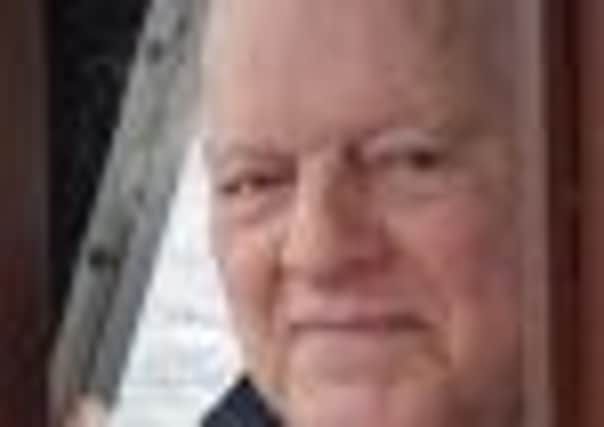Obituary: Andrew Currie, naturalist who played a crucial role in the environmental development of Skye


Andrew Currie was a naturalist who worked quietly and patiently on the premise that man is an integral part of the environment.
His whole ethos was based on the belief that humans, land and wildlife should all be considered together in the natural world and that people therefore cannot be removed from the equation.
Advertisement
Hide AdAdvertisement
Hide AdAs a result, nothing was viewed in isolation and when he undertook an environmental survey for the controversial Skye Bridge he put forward some innovative mitigating ideas to help the project do as little harm as possible while still providing benefit to the community.
Skye was his home for more than 35 years and he had a huge affinity for the island and all its fascinating habitats but he was born and raised in Edinburgh, where his career began at the Royal Botanic Garden.
The son of bank manager Thomas Currie and his wife Julia, he was born in Brunton Gardens, not far from where his father ran a branch at the top of Leith Walk. Educated at the Royal High School, as a youngster he was heavily involved in the Scouts and the Scripture Union and used to spend time at Canty Bay near North Berwick, the property donated by Baptist Scoutmaster “Pa” Evans to promote the Christian growth of young people.
After leaving school he completed his National Service as a weapons inspector in the Royal Army Ordinance Corps, serving at various bases including Aldershot and Bicester, before starting work in the Cactus House at the Botanic Garden.
Several years later he moved to Kelso as an experimental officer for the Hill Farming Research Organisation before heading north to the Black Isle to join the Nature Conservancy Council (NCC) as an assistant regional officer for a vast area covering Sutherland, Caithness and Ross and Cromarty.
There he became involved with Sites of Special Scientific Interest (SSSI), nature reservations and in local public enquiries into developments for the emerging oil industry, particularly at Nigg Bay.
In 1976 he moved to Skye with the NCC, becoming responsible for the island, the Outer Hebrides and the Small Isles. Already familiar with Skye through family holidays, he loved the island’s culture, its range of interesting habitats and they way the people who lived there interacted.
Following the introduction of the Wildlife and Countryside Act of 1981, he was heavily involved in the notification of new proposed sites of special scientific interest and in setting up the system to designate them SSSIs.
Advertisement
Hide AdAdvertisement
Hide AdHe also did a great deal of bird survey work, something he had been involved in on the Black Isle, and was a member of the Scottish Ornithologists’ Club and the British Trust for Ornithology. Skye had gone 100 years without a documented bird record and in the 1980s he began collating the data required with a view to publishing a book on the island’s birds. That dedication helped his friend and fellow ornithologist Bob McMillan to publish his book, Skye Birds, now in its second edition.
“Always quiet and unassuming, Andrew was an accomplished naturalist but in typical style, admitted to a little knowledge about botany and not too much about birds, which was far from the truth,” said Mr McMillan.
Currie also set up branches of the Scottish Wildlife Trust in Easter Ross and on Skye, chairing the latter, gave talks to schools and organisations all over Scotland and produced a long-running column on his observations of the natural world for the West Highland Free Press.
He had been hugely influenced by the big names of conservation in Scotland, including John Muir, and was often visited by prominent figures in the field including the Scottish zoologist, writer and conservationist John Morton Boyd.
In the 1990s one of his visitors was the singer Toyah Wilcox who, as part of a television series, made a trip to Skye to see eagles and talk to Currie, the local expert on the subject.
After retiring from the Natural Conservancy Council he continued to work as an environmental consultant for clients including the NCC’s successor Scottish Natural Heritage, Isle Ornsay Estate on Skye and the Skye Bridge contractors. He was also on the Isle of Eigg Trust and the John Muir Trust, acting as a special technical advisor to the latter.
A staunch Nationalist who had been actively involved in the Scottish National Party during the 1960s and 70s, he once had a long conversation with Prince Charles, the John Muir Trust patron, on the relative merits of independence and republicanism, having declined to remove the SNP badge from his lapel.
His other interests included Scots language, supporting local piping recitals and the Faith Mission.
Advertisement
Hide AdAdvertisement
Hide AdA man who was a great believer in community groups, he spoke the language of locals, embraced those around him and met the concerns of the people halfway. On Skye he had quickly established a reputation as someone who cared as much about people as natural history and saw the two as inextricably mixed.
It was this professional philosophy that won him countless friends for nature and which now leaves a gentle but enduring imprint on the map of much of northern Scotland.
He is survived by his wife Hazel, whom he married in 1956, and their sons Duncan and Malcolm.
ALISON SHAW